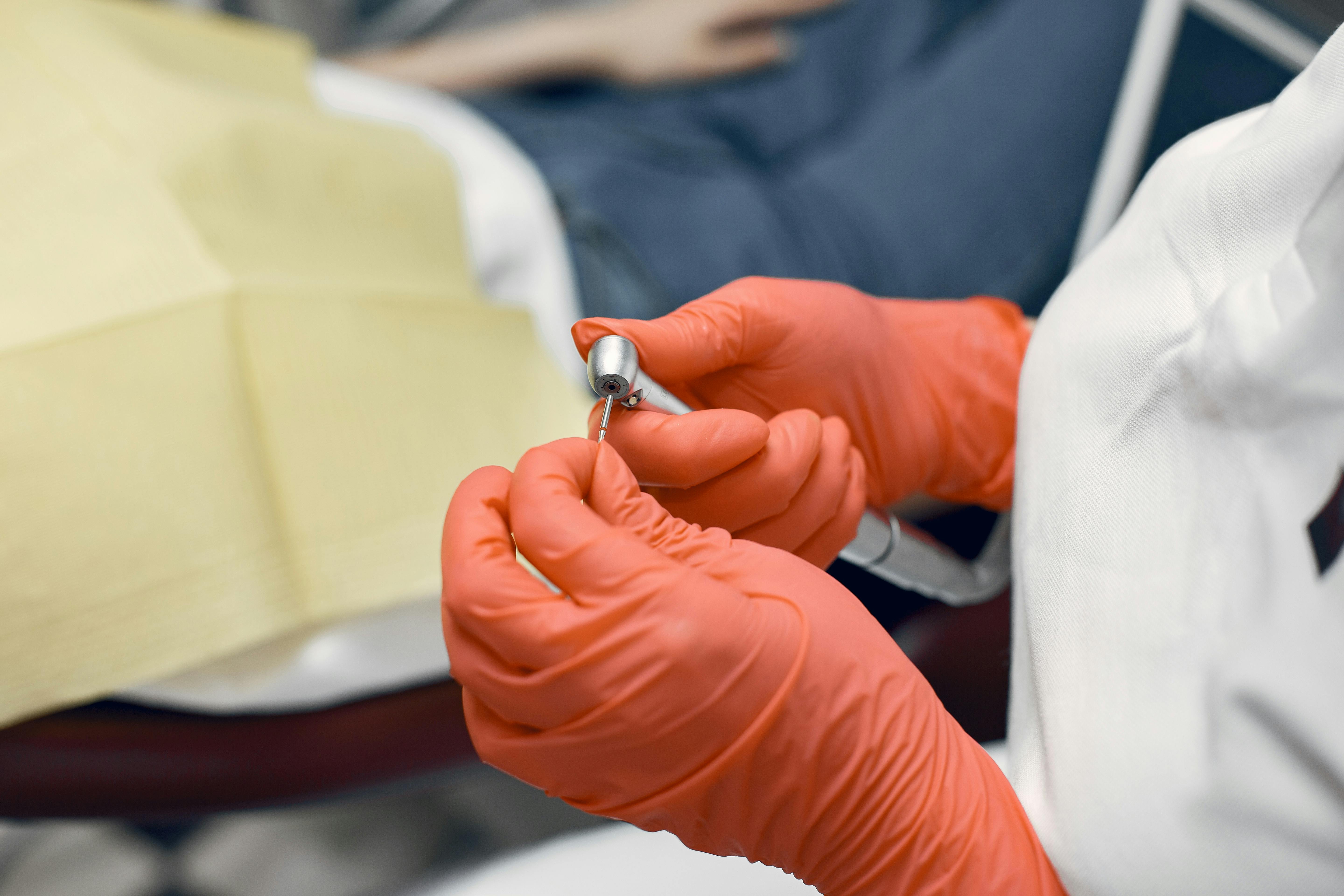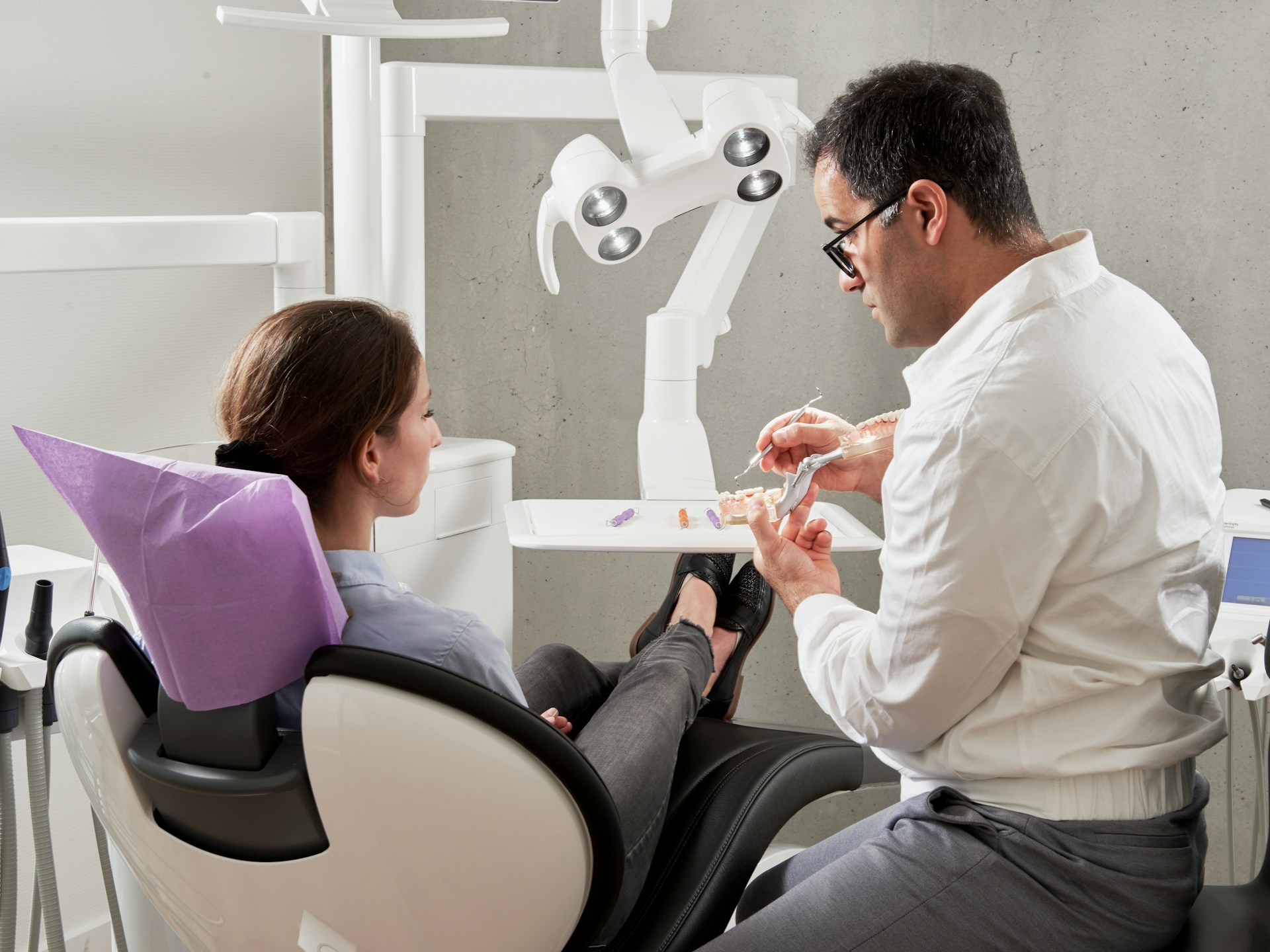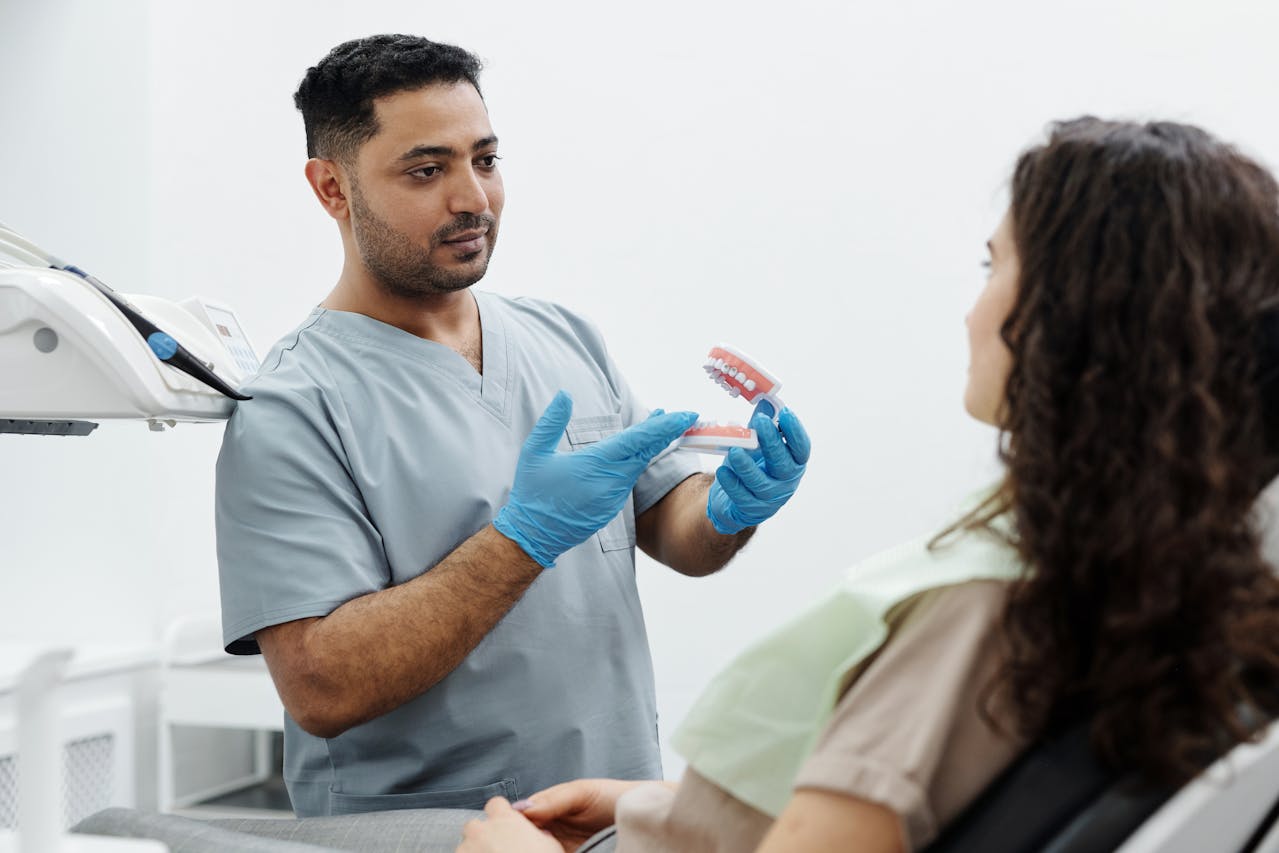How Much Do Dental Clinics Make in Georgia – 2025

Dental clinic profitability in Georgia varies significantly based on multiple factors including location, patient volume, and service offerings. Understanding these financial dynamics helps practice owners make informed decisions about their operations and growth strategies.
Most dental clinics in Georgia generate annual revenues ranging from $500,000 to $2 million, with profit margins typically falling between 15% to 35% depending on operational efficiency and market positioning. The state's diverse metropolitan and rural markets create different earning potential across regions, while specialization levels and technology investments directly impact bottom-line performance.
This analysis examines revenue patterns, cost structures, and profitability factors that determine how much dental practices earn throughout Georgia in 2025. The data covers everything from treatment pricing and insurance impacts to the financial differences between general dentistry and specialized practices.
1) Average annual revenue of dental clinics in Georgia
Dental practices in Georgia generate varying revenue levels depending on their location and size. Most general dental practices in the state earn between $500,000 to $1.5 million annually.
Georgia dental practices sell for approximately 72% of annual collections, which provides insight into revenue expectations. This percentage varies significantly across different metropolitan areas within the state.
Urban practices typically generate higher revenue than rural clinics. Atlanta-area dental offices often exceed the state average due to higher patient volume and treatment fees.
Practice size directly impacts revenue potential. Single-dentist practices usually earn on the lower end of the range, while multi-dentist clinics can reach or exceed $1.5 million annually.
Average dental practice revenue ranges from $600,000 to $1.2 million across the United States, with Georgia practices falling within this national benchmark. Specialized practices offering cosmetic or surgical services often generate higher revenue than general dentistry alone.
Revenue depends on factors like patient demographics, insurance acceptance, and operational efficiency. Georgia practices benefit from the state's growing population and economic development in major metropolitan areas.
2) Impact of location on dental clinic earnings
Location plays a major role in determining how much dental clinics earn. Urban areas typically generate higher revenue than rural locations due to larger patient populations and higher treatment acceptance rates.
Clinics in metropolitan areas often see annual incomes ranging from $150,000 to over $500,000. This wide range depends on factors like local competition, demographics, and economic conditions in each area.
Georgia's major cities like Atlanta, Augusta, and Savannah offer different earning potential compared to smaller towns. Urban practices benefit from higher patient volume but also face increased overhead costs and competition.
Rural dental practices may have lower operating expenses but often struggle with smaller patient bases. These clinics typically serve wider geographic areas with patients traveling longer distances for care.
The local economy directly affects what patients can afford to spend on dental treatments. Areas with higher average incomes support more profitable procedures like cosmetic dentistry and orthodontics.
Dental clinic owner earnings vary significantly based on whether the practice operates in high-density urban markets or serves rural communities. Population density and local insurance coverage rates also influence practice profitability across different Georgia locations.
3) Role of patient volume in clinic profitability
Patient volume directly impacts a dental clinic's bottom line. More patients mean more procedures, which translates to higher revenue for the practice.
A single dentist dental practice services approximately 1,300 to 1,500 active patients. This baseline helps establish the foundation for sustainable profitability.
Higher patient volume allows clinics to spread fixed costs across more visits. Rent, equipment payments, and staff salaries remain constant whether seeing 20 or 40 patients daily.
The key lies in maximizing chair utilization throughout the day. Empty appointment slots represent lost revenue that cannot be recovered.
Revenue is driven by high patient volume and services like cleanings, fillings, extractions, and basic restorative work. Each additional patient contributes to covering overhead expenses.
Consistent patient recall cycles ensure steady volume throughout the year. Patients who return for regular cleanings provide predictable revenue streams.
New patient acquisition costs money through marketing and initial consultations. Existing patients generate higher profit margins since acquisition costs are already covered.
Scheduling efficiency becomes critical when patient volume increases. Proper appointment management prevents bottlenecks that could reduce daily patient capacity.
4) Revenue differences between general and specialized dentistry
General dental practices typically generate annual revenue between $600,000 and $1.2 million. Solo general practices usually fall within the $750,000 to $1.1 million range.
Specialized dental practices earn significantly more than general practices. Dental specialists command higher fees due to their advanced training and specialized procedures.
The income gap between general and specialized dentistry is substantial. General dentists in private practice earn around $203,000 annually, while specialists average $323,780 per year.
Specialized practices can charge premium rates for procedures like oral surgery, orthodontics, and periodontics. These services require additional expertise and often involve complex treatments that justify higher pricing.
Location and patient demographics affect both practice types. However, specialists typically maintain higher profit margins due to their ability to charge more for specialized services.
The profit margins for general dental practices range from 30% to 40% of revenue. Specialized practices often exceed these margins due to their higher service fees and specialized equipment utilization.
5) Average treatment costs at Georgia dental clinics
Georgia dental practices charge varying rates based on location and procedure complexity. Urban areas typically command higher fees than rural regions.
Root canal costs in Georgia average $1,100, representing an 83% increase since 2005. This substantial rise reflects both inflation and increased overhead costs for dental practices.
Dental implant procedures range from $3,500 to $5,500 per implant. These fees have more than doubled from 2005 levels, making implants one of the most profitable services for Georgia dental offices.
Adult braces treatment costs in Georgia align with national averages of $4,800 to $7,135. Orthodontic services provide steady revenue streams for practices offering these treatments.
All-on-4 dental implant procedures average $2,260 per arch in Georgia. This specialized treatment requires significant investment in equipment and training but offers strong profit margins.
Basic cleaning and preventive services typically range from $75 to $150. While these generate lower per-visit revenue, they build patient relationships and create opportunities for higher-value treatments.
Geographic location within Georgia significantly impacts pricing power. Atlanta and Savannah practices generally charge 15-25% more than smaller cities due to higher operating costs and market demand.
6) Effect of insurance acceptance on clinic income
Dental practices that accept insurance typically see higher patient volume but lower profit margins per procedure. Insurance companies negotiate reduced rates for covered services, which can cut procedure revenues by 20-40% compared to cash payments.
Practices accepting multiple insurance plans often experience increased administrative costs. Staff must handle complex claims processing and navigate different coverage requirements for each provider.
However, insurance acceptance can boost overall revenue through increased patient flow. Many patients choose dentists based on their insurance coverage, making acceptance crucial for practice growth in Georgia's competitive market.
Dental offices must balance write-offs against patient acquisition benefits. Understanding collection processes helps practices make informed decisions about which insurance plans to accept.
Some Georgia practices implement hybrid models, accepting select insurance plans while maintaining cash-pay options. This approach allows dentists to serve insured patients while preserving higher margins on self-pay procedures.
Insurance acceptance decisions significantly impact a practice's financial performance. Clinics should analyze their patient demographics and local market conditions before determining their insurance strategy.
7) Pricing strategies used by successful clinics
Successful dental clinics in Georgia use cost-plus pricing to ensure profitability. This method covers all practice expenses while adding a profit margin on top.
Value-based pricing aligns service costs with patient benefits. Clinics charge based on the outcomes and value patients receive from treatments.
Market research helps practices set competitive rates. Successful clinics analyze local competitor pricing before setting their own fees.
Dental pricing strategies consider both financial sustainability and patient satisfaction. Practices balance profit needs with patient affordability.
Package pricing bundles related services together. This approach increases treatment acceptance rates and average transaction values.
Insurance-based pricing adjusts fees to maximize reimbursements. Clinics set rates at or slightly above insurance allowables to maintain profitability.
Premium pricing positions certain services as high-value offerings. This strategy works well for cosmetic and elective procedures where patients expect quality.
Flexible payment options support pricing strategies. Successful clinics offer financing to make higher-priced treatments accessible to more patients.
Regular price reviews ensure rates remain competitive and profitable. Top-performing practices adjust pricing annually based on costs and market conditions.
8) Influence of dental technology investments on revenue
Technology investments are powering growth and higher dental group valuations across Georgia's dental market. Practices that invest in modern equipment typically see increased patient volume and higher case acceptance rates.
Digital imaging systems and CAD/CAM technology reduce treatment time while improving accuracy. This efficiency allows dentists to serve more patients daily and complete procedures faster than traditional methods.
Intraoral cameras and 3D scanners help dentists present treatment plans more effectively. Patients better understand their dental conditions when shown clear digital images, leading to higher treatment acceptance rates.
Practice management software streamlines scheduling and billing processes. Automated systems reduce administrative costs while improving patient communication and appointment efficiency.
Teledentistry platforms expand patient reach beyond traditional office hours. Georgia practices using virtual consultations often capture patients who might otherwise seek care elsewhere.
Understanding the cost-effectiveness of these technologies is crucial for making informed investment decisions. Practices must evaluate return on investment carefully to ensure technology purchases align with revenue goals.
Modern dental equipment typically pays for itself within 18-24 months through increased productivity and patient satisfaction. Georgia practices report 15-25% revenue increases after implementing comprehensive technology upgrades.
9) Typical profit margins for dental clinics in Georgia
Georgia dental clinics typically achieve profit margins between 25% and 40%, similar to national averages. These margins vary based on practice size, location, and service mix.
General dental practices in Georgia maintain profit margins around 30-35% after accounting for overhead expenses. Specialized practices offering orthodontics or oral surgery often see higher margins.
Urban practices in Atlanta and surrounding areas face higher operational costs but can charge premium rates. Rural Georgia clinics typically have lower overhead but may struggle with patient volume.
The average dental practice profit margin nationwide is about 38%, providing a benchmark for Georgia practitioners. Most successful Georgia clinics aim for margins above 35%.
Factors affecting profit margins include staff costs, rent, equipment financing, and insurance reimbursement rates. Georgia's competitive dental market requires efficient operations to maintain healthy margins.
Practices focusing on high-margin procedures like cosmetic dentistry and implants typically achieve better profitability. Equipment investments and technology upgrades can initially reduce margins but improve long-term profitability.
10) Comparing revenue from private vs corporate dental clinics
Private dental practices typically generate different revenue levels compared to corporate dental clinics in Georgia. The ownership structure directly impacts how much money flows to the practice owner.
Private practice owners keep a larger portion of their revenue after expenses. They control pricing decisions and treatment recommendations without corporate oversight. Most private practices in Georgia serve between 1,300 to 1,500 active patients annually.
Corporate dental clinics operate under different financial models. They often have higher patient volumes but share revenue with the parent company. Corporate practices may have standardized pricing that limits flexibility.
Private dental practices often pay their owners better than corporate-owned facilities. The profit margins favor independent ownership in many cases.
Revenue per patient can vary significantly between these two models. Private practices may charge premium rates for specialized services. Corporate clinics sometimes focus on volume-based revenue strategies.
Location within Georgia affects both practice types equally. Urban areas like Atlanta typically generate higher revenue than rural counties regardless of ownership structure.
Key Factors Impacting Dental Clinic Earnings in Georgia
Several critical factors determine how much dental clinics earn in Georgia, with location playing the biggest role alongside clinic size and insurance acceptance rates. Dental clinic owner earnings vary widely based on these key elements.
Location and Demographics
Urban areas in Georgia generate significantly higher revenues than rural locations. Atlanta, Savannah, and Augusta offer the highest earning potential due to larger patient populations and higher income levels.
Population density directly affects patient volume. Clinics in metro Atlanta can serve 2,000-3,000 active patients compared to 800-1,200 in smaller towns.
High-earning Georgia locations include:
- Buckhead and Midtown Atlanta
- Alpharetta and Johns Creek
- Savannah Historic District
- Augusta medical district
Demographics matter more than location alone. Areas with higher education levels and household incomes above $75,000 generate more revenue per patient through cosmetic procedures and premium treatments.
Competition levels vary drastically across Georgia. Rural counties may have one dentist per 5,000 residents while metro areas can have one per 1,500 residents.
Clinic Size and Services Offered
Single-dentist practices in Georgia typically generate $600,000-$900,000 annually. Multi-dentist clinics can reach $1.5-$3 million depending on specialties offered.
Revenue by service type:
- General dentistry: $300-$400 per patient annually
- Cosmetic procedures: $1,500-$8,000 per case
- Orthodontics: $4,000-$7,000 per patient
- Oral surgery: $800-$5,000 per procedure
Specialty services command higher margins. Clinics offering Invisalign, implants, and cosmetic dentistry see 15-25% higher profit margins than general practices.
Equipment investments directly impact earnings. Digital X-ray systems and CAD/CAM technology increase efficiency and case acceptance rates by 20-30%.
Staffing ratios affect profitability. Successful Georgia practices maintain 3-4 support staff per dentist to maximize patient flow and treatment acceptance.
Insurance Participation and Payer Mix
Insurance acceptance rates significantly impact revenue streams. Georgia practices accepting most major insurers see 40-60% higher patient volumes but lower per-procedure rates.
Typical Georgia payer mix:
- Private insurance: 45-55% of patients
- Cash/self-pay: 25-35%
- Medicaid: 10-15%
- Medicare: 5-10%
Cash-pay patients generate 30-50% higher margins per procedure. Practices in affluent areas maintain 40-50% cash-pay ratios compared to 20-30% in lower-income areas.
Profit margins for dental clinics typically range from 30-40% but vary based on insurance participation levels. High-insurance practices often see 25-30% margins while cash-heavy practices achieve 40-50%.
Network participation affects scheduling efficiency. In-network providers typically maintain 85-95% capacity utilization compared to 70-80% for out-of-network practices.
Trends Influencing Dental Clinic Revenue in 2025
Georgia dental clinics face significant changes in patient spending patterns and operational costs. Technology investments are reshaping how practices generate revenue and manage expenses.
Economic Shifts Affecting Patient Demand
Economic conditions directly impact how patients approach dental care spending. Many patients delay elective procedures during uncertain times but maintain routine cleanings and urgent treatments.
Patient Payment Behaviors:
- Increased demand for payment plans and financing options
- Higher case acceptance rates for preventive care
- Delayed cosmetic and elective procedures
Insurance reimbursement rates remain relatively stable, but practices see more patients seeking cost-effective treatment options. Dental industry predictions for 2025 indicate that practices adapting to economic pressures maintain stronger revenue streams.
Georgia's population growth continues to drive demand for dental services. New residents often seek dental providers within their first year of relocation.
Revenue Impact Factors:
- Rising operational costs affecting profit margins
- Increased competition for price-sensitive patients
- Growing demand for transparent pricing
Practices that communicate value clearly and offer flexible payment options tend to maintain steadier patient flow during economic fluctuations.
Technology Adoption and Operational Efficiency
Technology investments significantly influence clinic profitability through improved efficiency and patient experience. Digital tools reduce administrative costs while increasing treatment capacity.
Key Technology Revenue Drivers:
- AI-powered diagnostic tools improving treatment planning accuracy
- Automated scheduling systems reducing staff workload
- Digital imaging enhancing case presentation success rates
Top dental industry trends for 2025 show that practices investing in patient communication technology see higher case acceptance rates. Automated appointment reminders and follow-up systems reduce no-shows by up to 15%.
Practice management software integration streamlines billing and insurance processing. This reduces administrative overhead and improves cash flow timing.
Operational Efficiency Gains:
- Reduced paper costs through digital records
- Faster treatment planning with 3D imaging
- Improved inventory management systems
Teledentistry capabilities allow practices to conduct consultations remotely, expanding their patient base beyond traditional geographic limits. This creates additional revenue streams without requiring physical office space expansion.
Frequently Asked Questions
Dental practice owners in Georgia face complex financial decisions that directly impact their clinic's profitability and long-term success. Current market data reveals significant variations in earnings based on location, specialization, and operational factors.
What is the average annual revenue for a dental clinic in Georgia as of 2025?
The average dental clinic in Georgia generates between $750,000 to $1.2 million in annual revenue. This figure depends heavily on patient volume, service mix, and geographic location.
Single-dentist practices typically earn on the lower end of this range. Multi-dentist clinics and those offering specialized services often exceed $1.5 million annually.
Practice size plays a crucial role in revenue generation. Clinics with 3-4 operatories usually perform better financially than smaller setups.
What are the factors impacting profitability in the dental industry in Georgia today?
Labor costs represent the largest expense for most dental practices, accounting for 25-35% of total revenue. Staff shortages have driven wages higher across all positions.
Insurance reimbursement rates continue to decline while operational costs increase. Many practices report profit margins between 15-25% after all expenses.
Patient retention rates directly affect profitability. Practices with strong recall systems maintain higher revenue consistency throughout the year.
How does the income of dentists in rural areas of Georgia compare to those in urban settings?
Rural dentists in Georgia often serve larger geographic areas with less competition. However, they face challenges with lower patient volumes and reduced access to specialized services.
Urban dentists benefit from higher patient density and diverse referral networks. Dentist salaries in Georgia show urban practitioners typically earn 15-20% more than rural counterparts.
Rural practices may have lower overhead costs but struggle with recruitment and retention of skilled staff.
What dental specialization commands the highest income in Georgia's current market?
Oral and maxillofacial surgeons typically earn the highest incomes among dental specialists. These practitioners often generate $400,000-$600,000 annually.
Orthodontists and endodontists also command premium fees for their specialized services. These specialties benefit from higher case values and strong patient demand.
Periodontics and prosthodontics show steady growth as the population ages. These specialties offer consistent revenue streams for experienced practitioners.
How have technological advancements impacted dental clinic earnings in Georgia?
Digital imaging and CAD/CAM technology have increased efficiency while reducing turnaround times. Many practices report 20-30% improvement in productivity after implementing these systems.
Teledentistry platforms gained popularity during recent years. These tools help practices maintain patient relationships and generate consultation revenue.
Practice management software has streamlined billing and scheduling processes. Automated systems reduce administrative costs and improve cash flow management.
What are the expected financial trends for dental practices in Georgia over the next five years?
Consolidation within the dental industry continues to accelerate. Corporate dental groups are acquiring independent practices at increasing rates.
Patient demographics are shifting toward older populations requiring more complex treatments. This trend supports higher revenue per patient for practices offering comprehensive services.
Technology costs will likely increase as practices invest in advanced equipment. However, these investments typically improve long-term profitability and patient satisfaction.









